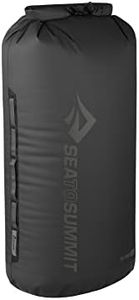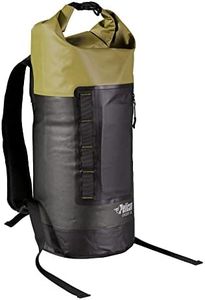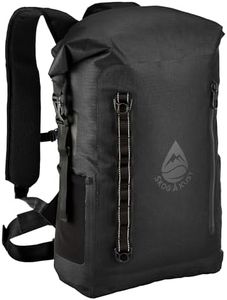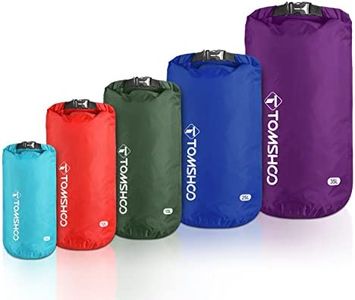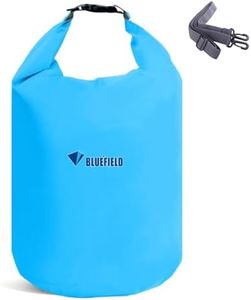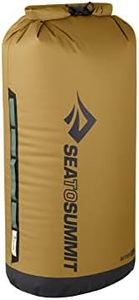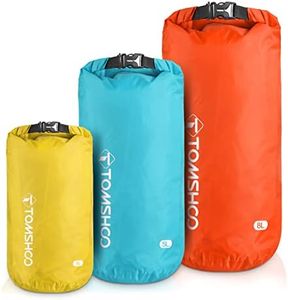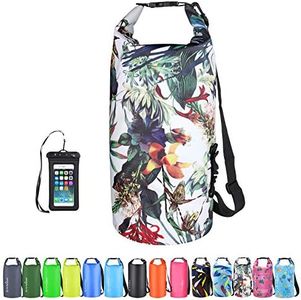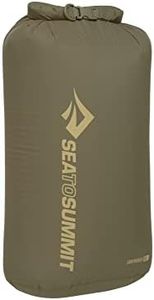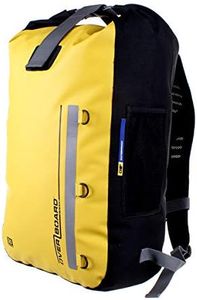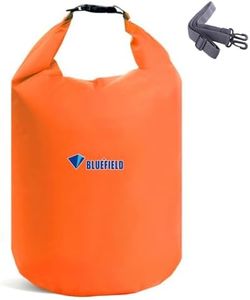We Use CookiesWe use cookies to enhance the security, performance,
functionality and for analytical and promotional activities. By continuing to browse this site you
are agreeing to our privacy policy
10 Best Dry Bags
From leading brands and best sellers available on the web.Buying Guide for the Best Dry Bags
Dry bags are essential for keeping your belongings safe from water, whether you're kayaking, camping, hiking, or just spending time near water. Choosing the right dry bag means understanding what you'll be using it for and which features align with your activities. Think about the kind of environment where you’ll use the bag and how much gear you need to protect.Capacity (Volume)Capacity, usually measured in liters, refers to how much gear the dry bag can hold. This is important because you want a bag that's large enough to fit all your essentials but not so big that it becomes unwieldy. Smaller capacities (2-10L) are great for personal items like phones, wallets, or snacks. Medium capacities (15-30L) suit day-trips, holding spare clothes, towels, or small equipment. Large capacities (over 30L) are for longer trips or when carrying gear for multiple people. To choose the right one, list the items you want to keep dry and add a little extra space just in case.
MaterialThe material of a dry bag affects both its waterproofing ability and durability. Common materials include vinyl, PVC, and nylon with waterproof coatings. Vinyl and PVC tend to be heavier and more durable, good for rough activities, while coated fabrics like nylon are lighter and easier to pack. If you need a tough bag for activities like whitewater rafting, choose heavier materials. For hiking where every ounce counts, lighter coated fabrics work well. Pick a material based on how rough you’ll use the bag and how much weight you’re willing to carry.
Closure TypeThe closure keeps water out, and a bag is only as waterproof as its seal. The most common closure is a roll-top, which you roll down tightly and then clip shut. Some dry bags use zip-lock or zipper closures. Roll-tops are the most reliable for keeping out water, especially if you might submerge the bag. Zippers can be more convenient for quick access but may not be as waterproof. If you expect a lot of splashing or short submersion, go with roll-top. For everyday use where convenience is key, zipper closures might be sufficient.
DurabilityDurability is about how well a dry bag holds up to wear and tear. This depends on the material thickness (measured in denier or millimeters) and overall build quality. Thicker materials resist punctures and abrasions better, which is important if you’ll use the bag in rough environments or stuff it with sharp objects. If you’re mainly using it to protect gear in a backpack, lighter materials are probably enough. Think about your main use and whether your activities are likely to expose the bag to rough surfaces.
Portability and StrapsSome dry bags come with basic carry handles, while others have backpack-style straps or shoulder slings. Straps make it easier to carry heavy or bulky bags over distances. For boating or keeping stuff dry at camp, a handle or simple strap will do. For hiking or portaging, consider bags with comfortable backpack straps. Match the carry style to how far and how often you expect to move with the packed bag.
TransparencySome dry bags are fully opaque, while others have clear panels or windows. See-through sections help you quickly find what you need without emptying the whole bag. If you only pack a few items, this may not matter as much, but for larger bags or organization, clear windows are handy. Choose a transparent or semi-transparent bag if you like to spot gear at a glance.

